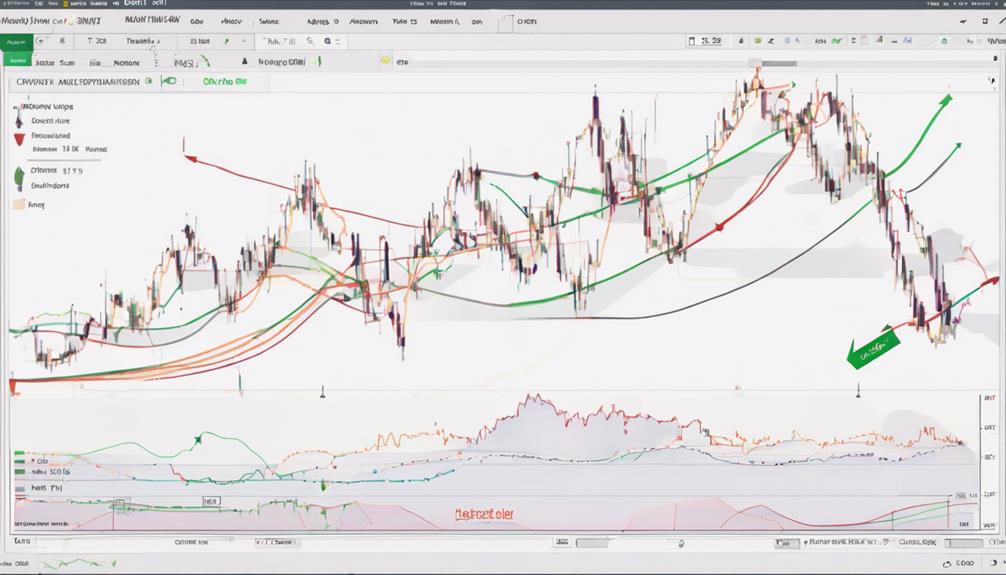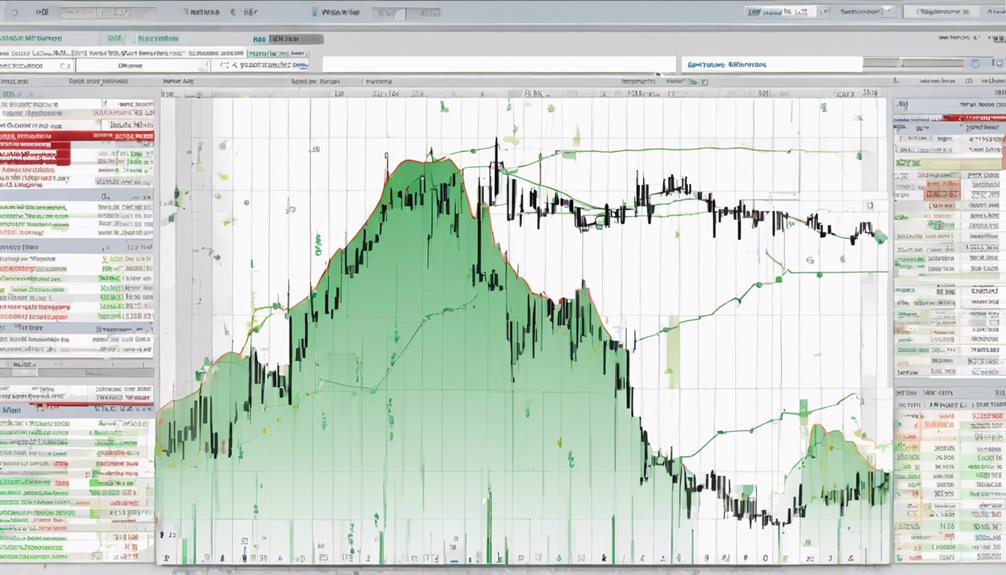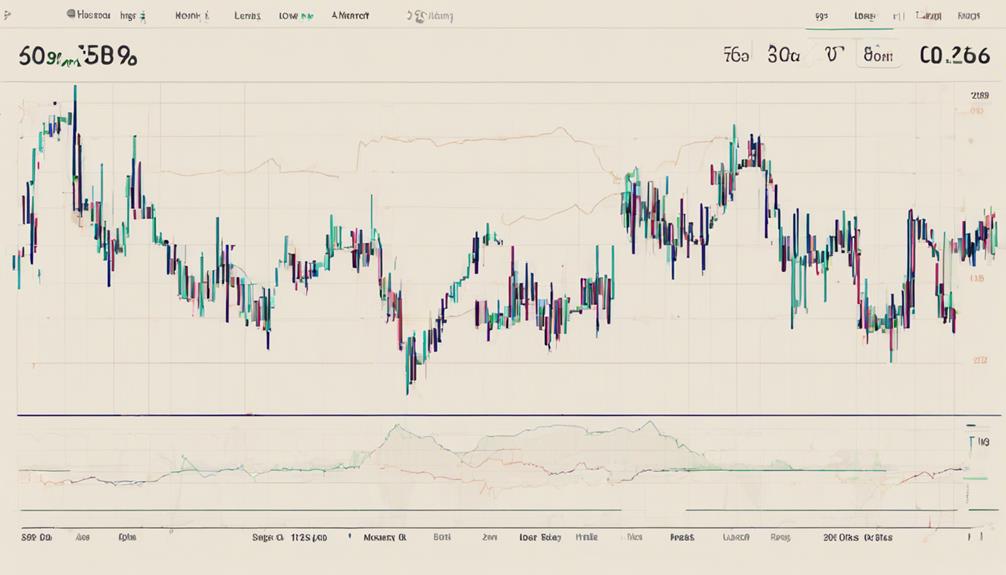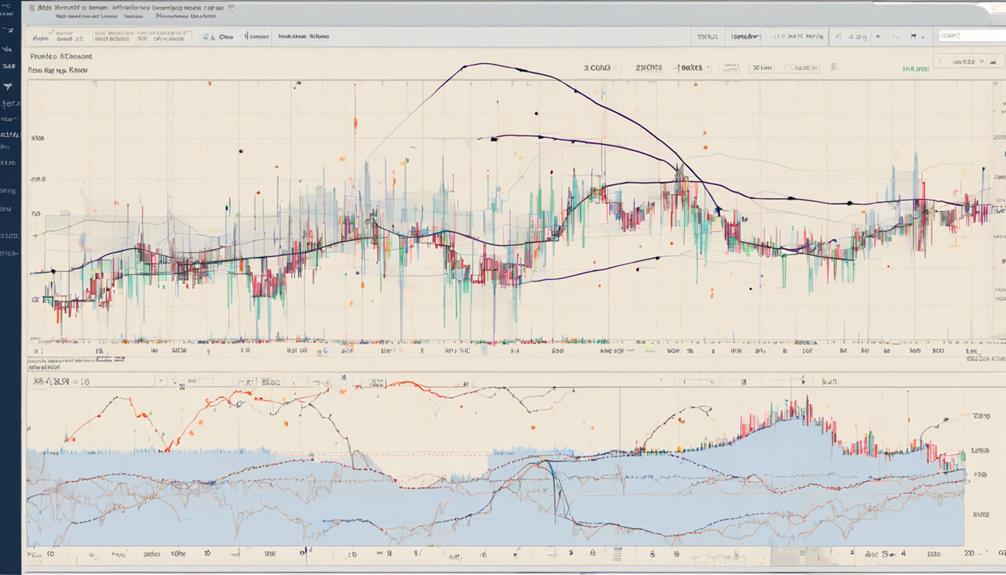Imagine navigating through a dense fog, relying on faint glimpses of light to guide your way. Moving averages in technical analysis act as those guiding lights, offering clarity amid market uncertainties.
By smoothing out price fluctuations, they unveil hidden patterns and trends that might otherwise go unnoticed. But why exactly are these averages deemed indispensable in the intricate world of trading?
Let's unravel the mystery behind their significance and explore the impact they wield on decision-making processes.
Importance of Moving Averages
Moving averages play a crucial role in technical analysis by smoothing out price data and aiding in the identification of trends and patterns in asset price movements. These averages are vital as they provide support and resistance levels, crucial for decision-making in trading.
By calculating the average price over a specific time frame, moving averages help reduce market noise, allowing traders to focus on the underlying trend direction. Acting as lagging indicators, they reflect past price action, giving insights into potential future price movements.
Additionally, moving averages are instrumental in confirming trend changes, indicating possible entry or exit points in the market through their crossovers and interactions with price data.
Benefits in Technical Analysis

In technical analysis, the benefits of using moving averages are evident in their ability to provide valuable insights into market trends and price movements. By smoothing out price fluctuations, both Simple Moving Averages (SMAs) and Exponential Moving Averages (EMAs) help identify trends effectively. They play a crucial role in determining support and resistance levels, which are essential for making informed trading decisions based on price movements.
Moving averages serve as a reliable technical analysis tool for confirming trend directions and evaluating the strength of market trends. These indicators are versatile and can be applied across various financial instruments, offering significant insights into price movements. Utilizing moving averages enables traders to better comprehend market volatility and anticipate potential price reversal points.
Role in Trading Strategies

When incorporating moving averages into your trading strategies, they serve as invaluable tools for identifying trends and making informed decisions based on market movements. Moving averages, including MA and EMA, are critical in trend-following strategies by confirming trend direction and providing entry/exit points.
They help filter market noise, allowing you to focus on significant price movements. Additionally, moving averages assist in setting precise stop-loss levels and determining key support/resistance zones. By incorporating moving average signals, traders can develop robust trading systems that enhance decision-making processes.
Understanding the role of moving averages in trading strategies is essential for effectively utilizing these indicators in your trades.
Interpretation in Market Analysis

Identifying market trends through the interpretation of moving averages involves analyzing crossovers and changes in trend direction. This analysis helps traders understand the dynamics of price movements and make informed trading decisions based on trend strength.
When interpreting moving averages in market analysis, consider the following:
- Look for crossovers between short-term and long-term moving averages to identify potential trend changes.
- Determine support and resistance levels by observing how stock prices interact with moving averages.
- Analyze the relationship between price movements and moving averages to gauge the strength of the current trend.
Understanding these aspects of moving averages aids in deciphering market trends and enables traders to act proactively in response to changing market conditions.
How Do Moving Averages Benefit Technical Analysis?
Moving averages in technical analysis help smooth out price data to identify trends and potential reversals. By using different time periods, such as 50-day or 200-day moving averages, traders can gauge the strength of a trend and make informed decisions on when to buy or sell stocks.
Practical Applications in Finance

To apply moving averages effectively in finance, consider their role in identifying trend direction and support/resistance levels, enabling informed decision-making by smoothing out price data and reducing market noise.
Moving averages, whether simple or exponential, are vital tools in technical analysis for assessing market momentum and predicting price trends. Traders use moving averages to confirm trend changes and determine potential entry or exit points based on historical data.
These averages help in analyzing price movements of stocks, developing forex strategies, and forecasting commodity price trends. By incorporating moving averages into your financial analysis, you can gain valuable insights into market behavior, identify support and resistance levels, and make well-informed trading decisions to capitalize on market opportunities.
Why are Moving Averages Considered Essential in Technical Analysis?
Moving averages in analysis are considered essential in technical analysis because they help traders identify trends and potential reversal points in financial markets. By smoothing out price data, moving averages can provide a clearer picture of market direction, making them valuable tools for making informed trading decisions.
Frequently Asked Questions
What Is the Purpose of a Moving Average in Technical Analysis?
In technical analysis, a moving average serves to smooth out price data, aiding in trend identification by mitigating short-term fluctuations. Calculated over specific time periods, it helps determine support and resistance levels, guiding trading decisions based on historical data.
What Is the Advantage of Using Moving Average Method?
When you use the moving average method, you gain a smoother trend representation, helping you spot potential support or resistance levels. It diminishes short-term fluctuations' impact, confirming trends and guiding your informed decisions based on the moving average direction.
Why Is Moving Average Important in Forecasting?
In forecasting, moving averages are crucial as they help smooth out price fluctuations, providing a clearer trend direction. By analyzing how prices interact with these averages, you can anticipate potential reversals, aiding in decision-making.
What Is the Best Use of Moving Averages?
For the best use of moving averages, identify trend direction, support/resistance levels, and potential crossovers. Utilize different MA lengths for accuracy in various trading objectives. Combine with other indicators for enhanced strategies. Adapt for different timeframes.
Conclusion
In conclusion, moving averages are like a compass guiding you through the ever-changing landscape of the market. Just as a ship relies on its compass to navigate the open sea, traders use moving averages to steer through price fluctuations and trends.
By providing a clear direction based on past price movements, moving averages help you stay on course and make informed trading decisions in the dynamic world of finance.
